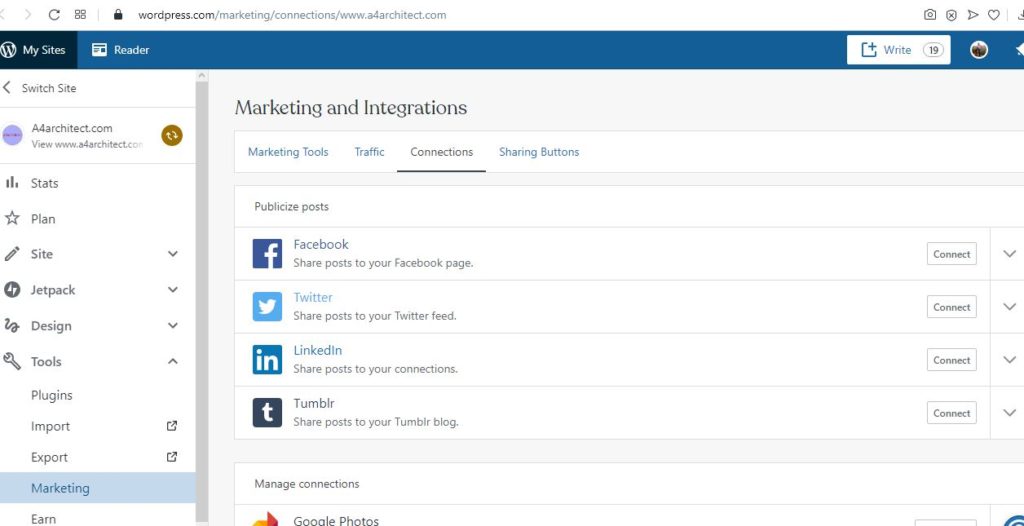Monetisation of an organisation can be easily done using digital marketing. This has several advantages such as ease of target marketing, ease of spread of reach to more regions and countries and now with COVID with us, reduces in face person to person marketing meetings hence much safer.
One of the best methods to monetize is coming up with unique and creative content that resonates and captures the attention of the specific target market. The content then attracts potential customers who you can then convert into paying clients at a later date. Content is best laid out to potential customers through a website that aggregates and feeds into social media networks from a central point.
Bill Gates and his 1996 predictions.
Content is where I expect much of the real money will be made on the Internet, just as it was in broadcasting.
One of the exciting things about the Internet is that anyone with a PC and a modem can publish whatever content they can create.
Bill Gates, “Content is King”
Bill Gates, in 1996, when the internet was relatively new, wrote in his essay titled Content Is King . He predicted that every businessperson or organisation will be able to easily publish their content and monetise their organisations without heavy IT or marketing expertise.
His prophesy came to pass 24 years later to the current times. Digital software such as WordPress has now enabled anyone without deep IT and marketing knowledge to become a publisher of content. If the content is unique and beneficial enough to the particular target group, then the publisher can easily start a conversation with the potential customer which will in turn lead to business.
WordPress.
This is a free website host that is very easy for anyone without IT expertise to log in and create their own website . 34% of the content in the internet and nearly 60% of blogs in the internet are powered through WordPress.
WordPress enables ease of managing content online where someone can be able to post the same content simultaneously into many social media websites such as Facebook, Instagram, Linkedin and Twitter.

Matt Mullenweg . Control of 34% of the internet through WordPress.
Right now we power about 34% of all websites as of this recording: that is the largest of any of the content management systems. Matt Mullenweg. Owner of WordPress.com
Matt Mullenweg was born in 1984. He dropped out of the University of Houston where he was pursuing a degree in political science and started WordPress thereafter.
WordPress powers many Rotary club websites worldwide.
Search Engine Optimisation.
Other aspects such as Site Engine Optimisation will come to play naturally as the publisher pushes his or her content into the internet. For example, Rotary Club of Ngong Hills website hosted for free at wordpress.com. When a publisher posts pictures or stories describing a Rotary activity such as a hike into the Ngong hills, alot of key words are picked by Search engines such as Google or Yahoo . These key words are what the Search engines will use to direct a potential customer searching for some particular information in a specific area eg a group of people would be searching for type of trees that grows on the Ngong hills. They will be directed in their search into the Rotary club of Ngong hills website where a conversation can commence which can lead to conversion into potential members for example.
Plug ins.
WordPress has plug in applications that can be installed freely that can transform the website into a Zoom-like online meeting place. Same case applies to any type of business.
Conferencing Plug ins available on WordPress
Other free plug in applications such as Revive Old Posts can be installed such that they can post the articles into several social media sites such as Facebook and Twitter automatically several times a day. This increases the number of potential customers to be reached greatly at zero cost.
Jetpack plugin, also available for free, can be added to enable data analysis on the statistics and type of visitors coming to read content into a particular website.
Decreased Attention span.
One Gallup poll revealed that more than 50 percent of all smartphone users in the US check their mobile devices a few times an hour or more, and an astonishing 63 percent can’t bear to part with their mobile gadgets, keeping them nearby while sleeping at night. Young people use their smartphones more than any other age group with more than 70 percent of those polled checking their devices a few times or more every hour.
With alot of online content these days, attention span has decreased significantly , meaning that for an organisations content to be noticed, it has to be unique and consistent. Organisations with many people can utilize these numbers by having most of its members posting pictures or stories online on their website so as to try and compete for the attention span of interested people or customers. The average American checks out his smart phone a few times every hour. This resonates round the world. Organisations will then need to keep pushing content to compete for this target client’s attention among other competitors.
Architect Francis Gichuhi Kamau
gichuhi@a4architect.com


Leave a Reply